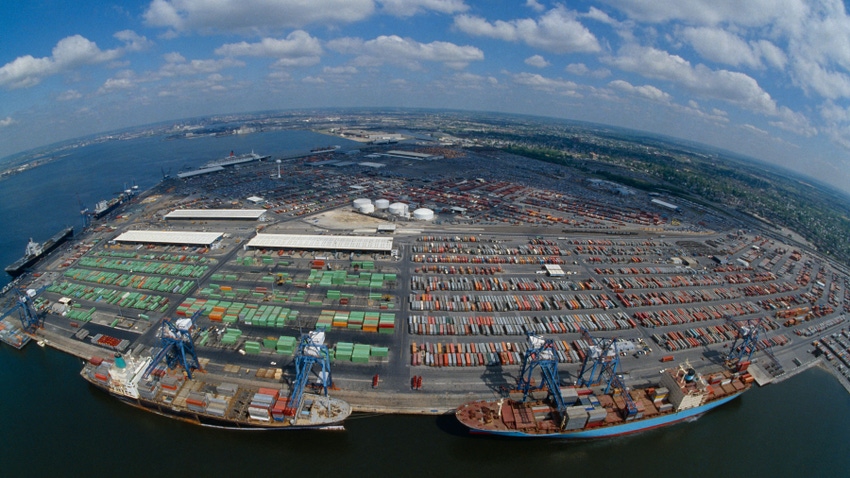April 16, 2024

Nearly halfway through the year when low grain prices and stubbornly high input costs have narrowed margins, softening equipment prices could bring welcome relief to this year’s balance sheets.
“Inventory is fast rising, and it’s driven by late-year models [like 2021 and 2022],” says Mitch Helman, sales manager for Sandhills Global, a Nebraska-based information company that collects an array of equipment sales data on numerous industries including agriculture. “Piggyback that with [high] interest rates and commodity prices, and those headwinds are driving down prices.”
Ryan Dolezal, sales manager at TractorHouse, one of Global Sandhill’s brands, agrees.
“We’ve observed a huge decrease in the auction value of planters month over month,” he says. “Some late-model units have been selling at auction for 10% to 20% less than what they were a month ago.” Asking prices for used planters declined by nearly 3% from February to March.
On the other hand, the value for used combines held fairly steady, while prices for tractors decreased less than 1%, according to the report.
As prices stabilize, sales are inching upward. The latest market report from the Association of Equipment Manufacturers documents how unit sales of 100-plus-hp tractors have increased nationwide for two straight months.
“Seeing the continued growth in 100-plus-hp tractor sales is a welcome sight as 2024 progresses,” says Curt Blades, senior vice president of the trade association. “As we start the planting season, we remain optimistic for the future of the ag equipment market.”
Year over year, tractor sales are down 13.3% and combines are off 20.4% compared to 2023.
Stabilized production
It’s been a few years since the pandemic halted assembly lines and shut down shipping routes, stemming the flow of new machines to equipment dealers, consequently driving up prices. Production has rebounded, and as ag machine inventory returns to its previous norm, prices have stabilized across the board. Recent Sandhills Global data show that inventory has rebounded past pre-pandemic numbers, pushing prices downward.
Barring a major black swan event, researchers expect this downward trend to continue for the foreseeable future — with some caveats. Unexpected wrinkles in the Francis Scott Key Bridge collapse’s recovery process in Baltimore, Md., and policy changes included in the farm bill, for example, could impact equipment prices one way or another. Even so, they’re not going anywhere fast.
“Used equipment is going to maintain reasonably good value. New or used equipment is going to be in demand no matter what,” says Kim Rominger, president of the North American Equipment Dealers Association, noting he doesn’t think manufacturers will offer any dramatic discounts to move things along. “I don’t want to say [prices] will stay flat, but most manufacturers aren’t looking for a huge increase in sales.”
Bridge’s connection to equipment
Long term, the Francis Scott Key bridge disaster on March 26 could impact farm equipment inventories. The collapse killed six and halted channel traffic to the Port of Baltimore, which imports more farm machinery than any other U.S. port. Last year, a record 1.3 million tons of roll-on, roll-off farm and construction machinery, worth $9 billion, moved through the port. It also ranks first in auto and light-truck imports, handling a record 850,000 vehicles last year.
Just about every major equipment brand uses components that pass through Baltimore, according to Rominger. Likewise, foreign brands like Kioti Tractors and LS Tractor rely on the port to bring finished products to the U.S. marketplace. Maryland Gov. Wes Moore expects the port’s productivity to return to previous levels by the end of May.
So far, the collapse has not impacted equipment price tags much, since dealers have so much inventory. But if the channel’s closure continues longer than anticipated, parts shortages could delay production of made-to-order machines, he says.
“It’s a blip right now. But depending on the length of time the port stays closed, it could be substantial,” Rominger says, adding that with luck, “We should be OK.”
Tax, policy impacts
What’s included in the next farm bill could also impact prices, but Rominger is optimistic lawmakers won’t do anything drastic.
“As long as they keep the crop insurance rates reasonable and they don’t mess with the issues around fuel,” it’s a win, he says. “They’re going to be relatively conservative in the farm bill.”
Tim Wentz, field director for the Northeast Equipment Dealers Association, says another potential lever: bonus depreciation deductions. His organization is advocating for the government to increase bonus depreciation deductions back to 2022 levels, or 100%. Bonus depreciation ramped down to 80% in 2023 and is set to shrink again to 60% this year unless Congress passes the Tax Relief for American Families and Workers Act of 2024.
“The other thing, particularly in the Northeast, is the amount of production agricultural land that’s being chewed up by agrivoltaics,” Wentz says. Over the last five or so years, utility-scale solar farms have more than doubled, gobbling up farmland nationwide. That’s projected to continue. More than 80% of new solar projects built by 2040 could be on designated farmland, according to the American Farmland Trust.
About the Author(s)
You May Also Like






